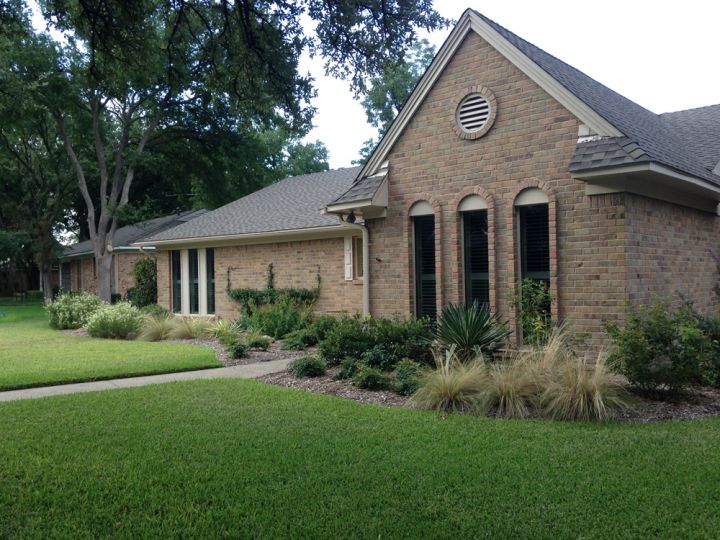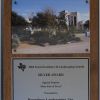Is Your Lawn Suffocating?
September 13, 2016 | By webadmin
One thing we never want to do is complain about rain in Texas! But often we get too much of a good thing, all at once. Continual heavy rain and flooding, which we experienced over the last two spring seasons, have caused some problems for our soils and lawns.

Heavy Rains + Heavy Soil = Suffocated Plants
Our soils in North Texas are heavy clay and naturally prone to compaction. When soils become compacted, plant roots are starved of oxygen. They also may sit in too much water that can’t drain away, or water can’t penetrate the dry compacted soil. This causes plant roots to essentially suffocate, rot, or dry out.
Another effect of the heavy rains is that nutrients have leached out of the soil, causing nutrient deficiencies in your lawn and landscape plants. If your lawn or landscape plants have “yellowed” this can be due to deficiencies in nutrients such as nitrogen, iron, or other nutrients. Basically, your plants are starving.
What’s the solution? Aeration.
In order to correct some of the soil issues caused by heavy rains, we need to aerate it. When was the last time you aerated your lawn? If you’re puzzled by this question, then it’s safe to say this is the year to start! When you aerate, the soil subsurface opens up and reduces the compaction, allowing oxygen, water and fertilizer to percolate into the soil where it can reach your lawn’s roots. When new air spaces are created in the soil, drainage improves, causing less water runoff and reducing water waste.
To get your lawn and soil breathing again, we perform a process called “core aeration”. Small plugs are removed from the soil allowing your soil to breathe. It may look a little funny at first, but the soil plugs will break back down into the lawn.
Benefits of aeration:
- Diseases such as Brown Patch and Take-All Root Rot that become visible in lawns in fall and spring, are better suppressed in lawns that have good airflow and drainage.
- Aeration stimulates beneficial microbial activity that improves soil texture and helps plant roots take up nutrients.
- Thatch, the layer of decaying matter just under the green blades of grass, can build up to high in compacted soil, causing further damage to your lawn. Aeration helps thatch to break down, keeping it at a manageable level.
Core aeration, fall lawn fertilization and good water management this fall will help your lawn look its best next spring.
